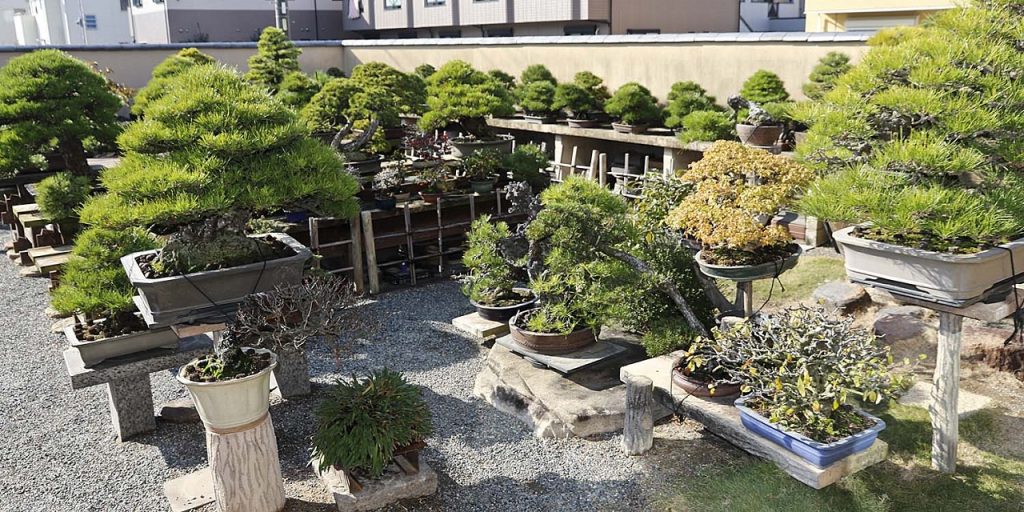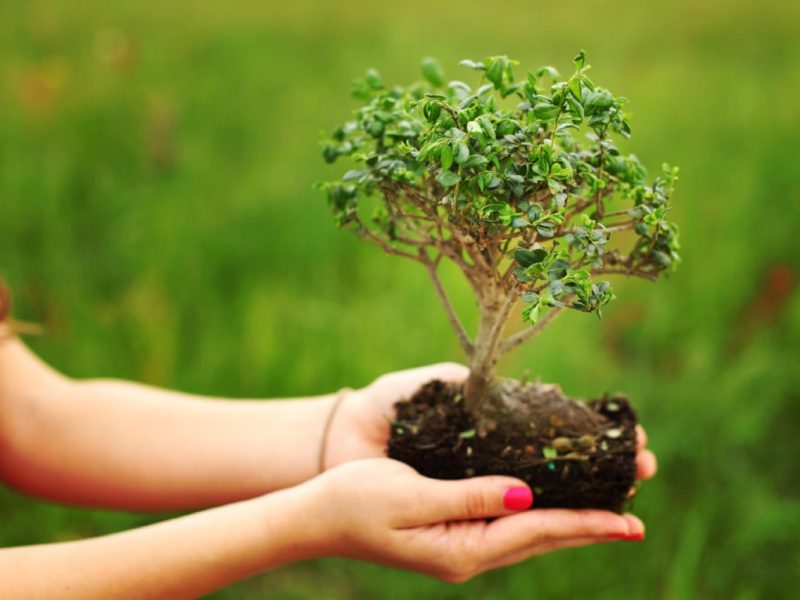By nature, bonsai are primarily trees, and therefore their natural habitat is outdoors, in the fresh air. We tend to grow bonsai as a house plant, and growing bonsai outdoors is rather an exception to the rule. And for good reason, because a few bonsai trees can beautify your garden in an incredible way! See for yourself just by taking a look at .
Planning to create a bonsai park outside your home? The first thing to do is to choose the right trees. You need to pay attention to those that feel great in your climate conditions.
How to help bonsai survive the winter
Bonsai is a full-fledged miniature tree, not an indoor plant, so placing bonsai should first of all be done with an eye toward winter. You can help bonsai to survive the winter by burying the tree along the lower branches and covering the soil with mulch, or, in case of great cold, move it to an unheated room. It is best to choose a place protected from wind and sun for the winter, but not from rain or snow. I have a whole article on how to help bonsai survive the winter. Check it out.
In spring and summer, bonsai should be placed where there is plenty of morning sun and afternoon shade. A bonsai feels good on an elevated spot – on a table, wall or bench – about eye level. You don’t need to bring an outdoor plant into the house for long periods of time. Your bonsai should not stay indoors for several days.

What plants are suitable for growing bonsai outside?
Most importantly, you need to determine what conditions you can offer the tree and what species can survive in these conditions. If you choose “native” trees for the region – that will be fine! But keep in mind that all types of bonsai need additional protection in winter, because they are planted in shallow containers, and the bulk of the root system is not in the soil, as in a normal plant, but above it.
If you live in a region with a subtropical or Mediterranean climate, you can afford to grow many types of bonsai in the garden, and your task will not be to help the bonsai survive the winter, but to protect the bonsai from the heat and intense sun. The best choice for you would be olive, pomegranate, fuchsia, Chinese elm, mulberry, Chinese privet, any maple, swamp cypress, Mediterranean juniper species.
Cherry, apple, and many evergreen species, which initially like cooler conditions, will also grow well if protected from excessive sun.
All native Japanese species for bonsai grow well in temperate regions. Subtropical and Mediterranean trees will also be able to overwinter outdoors if protected from frost, such as in a greenhouse.
In maritime climates with humid summers, you will face the problem of excessive moisture, so you will need to take care of good soil drainage.
In continental climates with hot summers and cold winters you will need to give the bonsai some shade in summer and good frost protection in winter. Or you can limit yourself to a few hardy native species. I would recommend using trees for outdoor bonsai cultivation that can survive the winter in your region.
Characteristics of demanding bonsai plants.
First, consider the following evergreens.
- Chinese juniper.The adult plant can withstand frosts up to -20 -30 ° C. The young plant should be insulated for the winter. Suffers from excessive heat and direct sunlight. Normally tolerates a moderate drought.
- White (Japanese) pine. Adult plants are quite frost-resistant. Young bonsai need to be covered to the lower branches. Overwinters well in such conditions. Suffers from direct sunlight.
- Black pine. More fastidious to conditions than white pine. Endures moderate winters. At high frosts it is necessary to move it to unheated rooms. Well tolerates direct sunlight. Sufficiently heat-loving. More suitable for growing in the southern strip.
- Stone oak. An excellent choice for growing in the southern belt and Mediterranean climate. In the conditions of continental Eurasia cultivation is possible. The plant should be moved to a greenhouse for the winter. Mature stone oak will be able to withstand a moderately cold winter outside with insulation of the roots. Drought tolerant. The most hardy of all evergreen oaks.
- Spruce. Excellent for growing in the midlands. Should not be grown in southern climates – the plant will suffer from heat and sun. Frost-resistant. An excellent choice for garden bonsai!
- Cypress. Of course, cypress is more suitable for growing in a southern climate. However, many species, such as Cypress arizona, are quite undemanding and can survive frosts even to -20 … -25 °C. In winter it will require additional protection, and possibly transfer to a greenhouse or unheated room. On the whole, a good choice for the middle zone as well.
- Yew berry. An excellent choice for almost any region. Well tolerates a variety of natural conditions.
- Cedar. Demanding to soils rather than temperature conditions. Need protection from rodents. A good choice for the middle strip, as well as for the Mediterranean regions.
- Myrtle. Quite a heat-loving plant. Does not tolerate prolonged sub-zero temperatures. In general does not like sub-zero temperatures, but requires a period of winter dormancy.
Some deciduous trees will also be good as bonsai for the garden. They drop their leaves in winter and are covered with leaves again in spring.
- Apple tree. Good for growing bonsai. You can choose any apple tree with small fruits.
- Cotoneaster. Many of its species are perfectly adapted to growing in the middle belt.
- Oak. A good choice for growing bonsai in the garden or park. Quite undemanding. Roots of young plants will need to protect in the winter.
- Chestnut. A beautiful, undemanding plant that will make a wonderful bonsai for the garden. Cover the roots for the winter. Young chestnut bonsai plants should be put in an unheated room during periods of severe frost.
- Larch. Difficult plant to form bonsai, but worth it. Good for continental climates.
- Privet. We are accustomed to the fact that privet is an evergreen plant, but there are many deciduous species that are excellent for forming highly decorative bonsai, which can grow in the garden in the middle belt with the proper attitude.
- Ginkgo biloba. A plant which is unfamiliar to us but which can survive the winter in the middle belt. Of course it will require more attention than a spruce. But perhaps it is worth it!
Of course, this list is not exhaustive, but now you have an idea of what plants are suitable for the formation of bonsai in gardens and parks.
Care for bonsai in the garden
With proper care, bonsai will grace your garden or park. Of course, the instructions below are for guidance only. And they won’t be enough, because the art of bonsai is very complex. If you seriously plan to do it, I recommend you buy one of the books on the subject.
Watering
Watering bonsai should be regular, so don’t rely solely on rain. Never allow the soil to completely dry out. If your bonsai is located in full sun rather than semi-shade, it probably needs daily watering. You can use a moisture meter to determine soil moisture. Water with a watering can or hose and sprayer. Do not disturb the soil when watering. It is ideal to use rainwater for watering as it helps reduce mineral buildup in the compost.
Feeding
Feeding is also necessary to keep your bonsai healthy and beautiful. Since any bonsai grows in a small amount of soil due to the fact that its roots are mostly above the ground, that soil must be able to provide all the nutrients. Liquid all-purpose fertilizer diluted at half the recommended concentration will suffice. Fertilizer should be applied at least once a month, except during the dormant winter. Your bonsai will also respond well to foliar applications of water-soluble fertilizer in spray form.
Pruning
It is not possible to give a clear pruning schedule for bonsai trees here. Since different trees grow at different rates, it is necessary to estimate the growth rate of each tree and adjust the pruning schedule.
Initially, a young bonsai will require pruning about once a year in order to form the ideal shape. Once the shape is established, the plants will need pruning and trimming several times a year to keep them in shape.
Deciduous trees are best trimmed in early spring. The exception to this is maples, which need to be pruned in the fall because they release sap in the spring and pruning can cause the tree to become overly exhausted.
Conifers and other evergreens are better pruned in the fall. The exception is pines, which should be trimmed in early spring. Here we are talking about the most serious pruning. Bonsai need to be pruned throughout the year.
Repotting
Repotting should take place periodically for all bonsai plants in the garden. It is necessary to transplant bonsai when the root system has filled the pot. Not only does the tree need fresh soil, but the roots also need to be pruned. As a general rule, most deciduous trees require transplanting every two or three years. Evergreens need to be transplanted every four or five years. Because trees grow at different rates, this schedule is not universal.
Repotting is best done in the second half of summer or early fall. The tree is removed from the pot and about one-fourth of the root system is cut off. Do not forget to provide a drainage layer of fine gravel when transplanting. Fill in fresh soil and plant the tree at exactly the same height as it was planted before transplanting. Water the bonsai thoroughly.
Pine roots should be pruned every 4 years, birch roots every year. The cut roots of the bonsai should resemble a ball.
Composts
There are various specialized compost mixes for bonsai. However, you can make your own mix:
- Two parts peat;
- Two parts sand with lime added;
- A little fertilizer depending on the type of plant.
- Pest and disease control.
Since your bonsai is an ordinary tree in miniature, it may suffer from diseases specific to the species. Treatment should be the same as if you were fighting a disease of an ordinary tree of this or that species.
Good luck growing bonsai in the garden!



